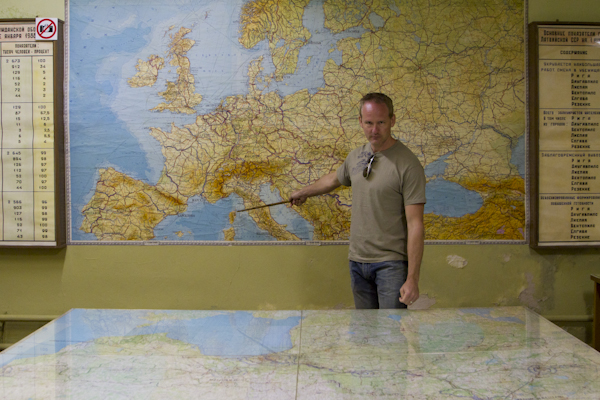
Never fear…
If thermonuclear destruction rained down on Latvia, your fearless Communist civil leadership would survive.
Or at least, that was the intention behind the massive Ligatne bunker, a 2,000 square metre secret facility whose existence was only declassified in 2003.
I’m fascinated by Cold War sites, and I’d never pass up the opportunity to explore one. So we drove out there from Riga one drizzly day, nearly an hour east of the city, into the heart of a beautiful forested national park.
The bunker was known as “The Pension”, because it’s cleverly concealed beneath a dreary looking 1960’s “rehabilitation centre.”
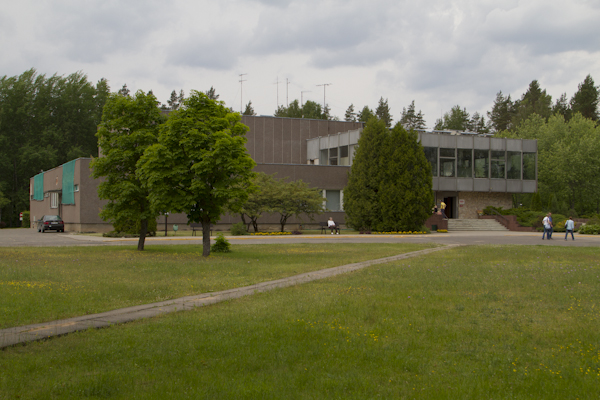
I’m not talking drug rehab or AA — this was a sort of spa in communist times, where the elite could go to be pummelled by large women called Olga, or be treated to beetroot enemas and a diet of carrot sticks.
You can only get down into the bunker on a tour, for which we had to call ahead. As luck would have it, there was only one other English-speaking couple, and so we were a semi-private group of four.
The place still functions as a spa / rehab centre today — although I don’t know how depressed or burnt out or nostalgic you’d have to be to want to stay in that dimly lit throwback.
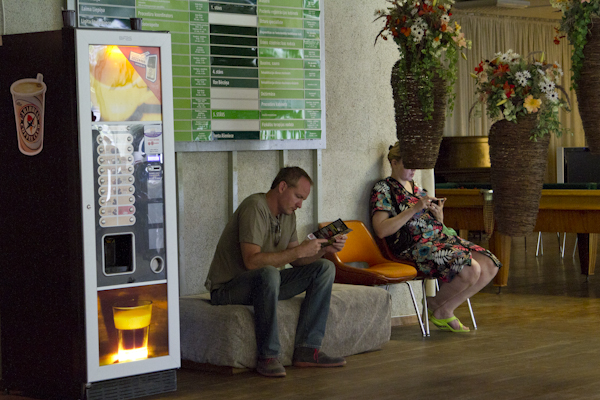
We paced around the lobby waiting for our guide to arrive. I amused myself by playing some sort of shuffleboard on a massive billiard table with tiny wooden wheels, and an old lady in a bathrobe shuffled over to watch.
When Oskar finally marched in, he launched right into a Soviet spiel, refusing to take us below until one of us surrendered an ID card (which he glanced at and put in his pocket).
Without further delay, we walked across the lobby to a normal concrete internal stairwell, and descended several flights to the blast door of the bunker, 9 metres underground. The temperature dropped as we went, bottoming out at a cool 13C.
“This facility was meant to be the command centre for the Latvian communist political and administrative leadership in the event of war or serious natural disaster,” he said. “This was not a military bunker, though it did of course have room for KGB officers.”
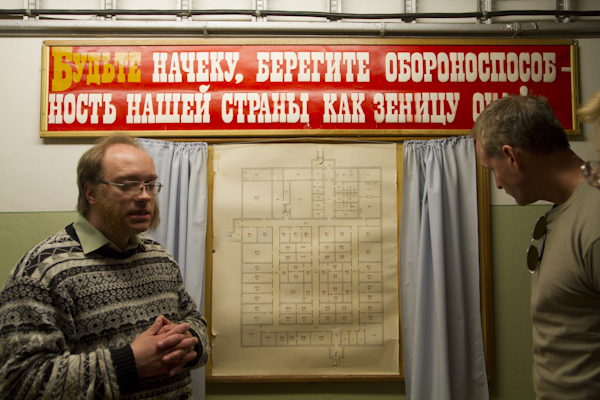
The civil authorities would rush down here to coordinate civil tasks and run the government, but there was no room for their families, or for any women at all. They would have to take their chances up above.
The bunker was planned at the height of the Cold War in 1968, but it only became operational in 1982 — when it was no longer needed.
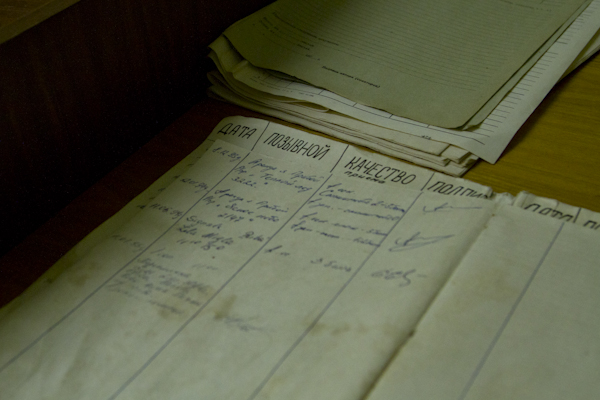
It could house around 250 people, and they could survive down there for up to 3 months. An artesian well supplied clean water from 150m deep.
The air circulation system still works perfectly today — a fact that we discovered when Oskar switched it on with roar.
“The generators still work too,” he said. “We use it sometimes as an alternate source of power for the rehabilitation centre, if there is an outage.”
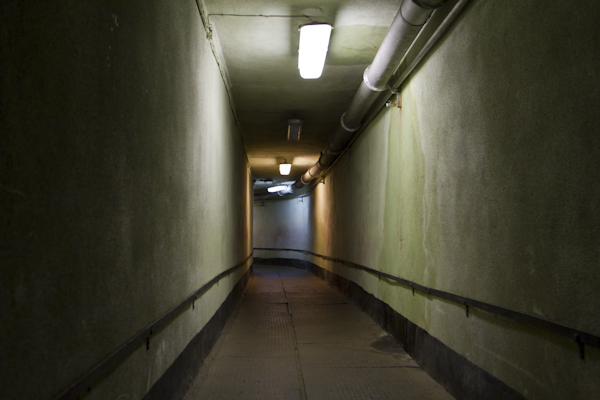
“Everything inside the bunker is original,” he continued. “When the Soviets left, bunker was closed up. And because even the location was secret, and the centre was built on top of it, it was never broken into or scavenged like other Soviet facilities when they pulled out.”
Vintage equipment included a communications system that bounced signals from other facilities in the region and relayed them directly to Moscow. A sign on the wall above the electronics read, “Without communication there is no order. Without order there is no victory.”
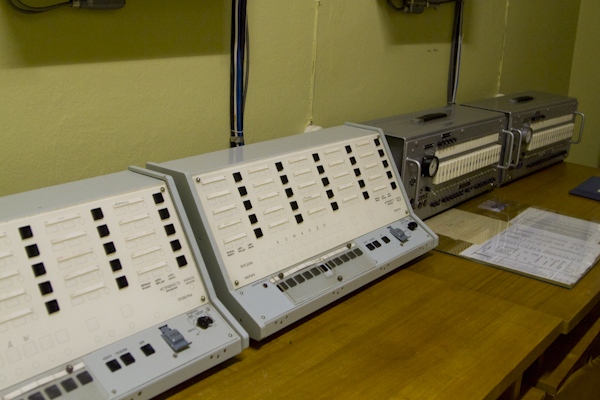
The command centre included an old wall map that showed the historic names of Latvian collective farms from Soviet times. And giant maps with hand-drawn plans and projections outlining what would happen if the dams of all hydro power stations were destroyed, which towns would be underwater and how that would affect the largest population centres.
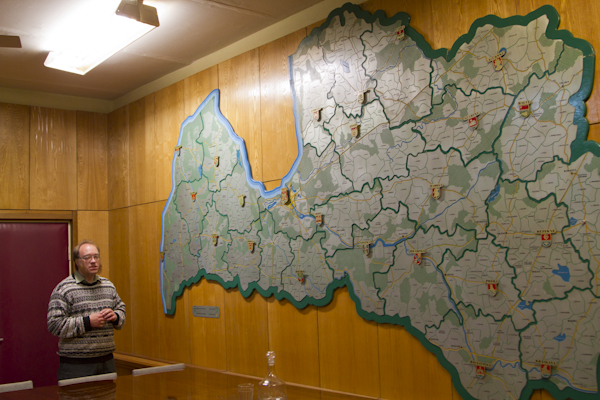
There was also a radio station with a complete recording studio for politicians, so they could tape their speeches
“All speeches were recorded in those times,” Oskar explained. “It had to be perfect, and mistakes were not permitted. We could not see the leaders as weak.”
The chairman also had a very nice, dimly lit office complete with day bed. This was the only bed in the entire massive facility. Everyone else was supposed to sleep at their stations.
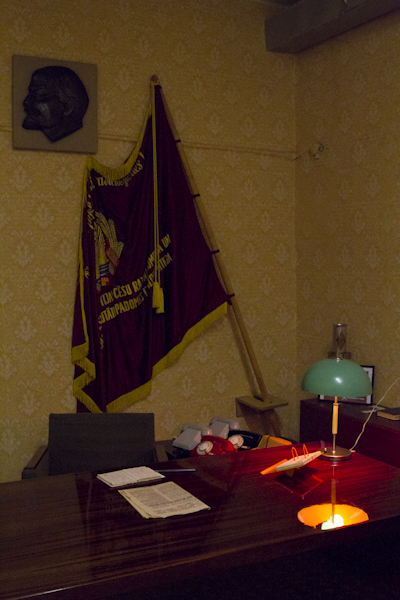
Oskar escorted us through all these sections of the facility, explaining what they were and putting us into the scene…
He elected my wife chairman and sat her behind the desk to make an on-the-spot “disaster announcement” to the population, and then locked her in the office and turned off the lights.
We had to put on gas masks, and then I was told to do 10 push ups and breathe normally.
We posed beside the bust of Lenin, and pretended it was an honour to do so.
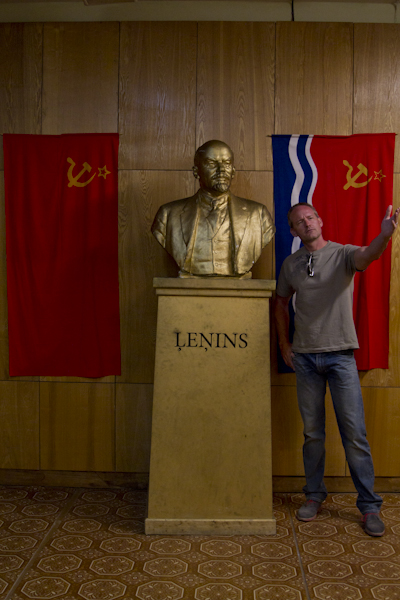
We even ate a Soviet style lunch in the canteen, at tables where the plastic flowers from 1982 still looked fresh. The small meat-stuffed dumplings were surprisingly tasty. But the kool-aid type “drink” was not.
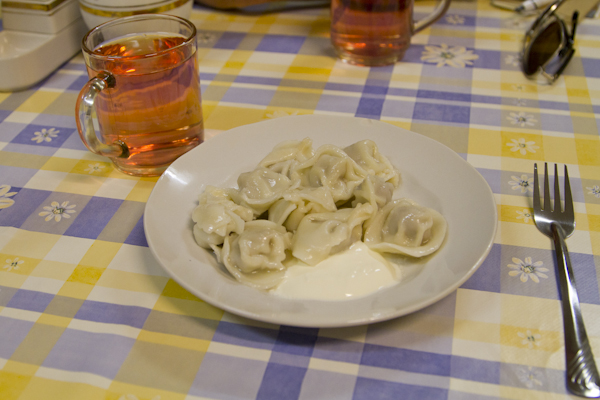
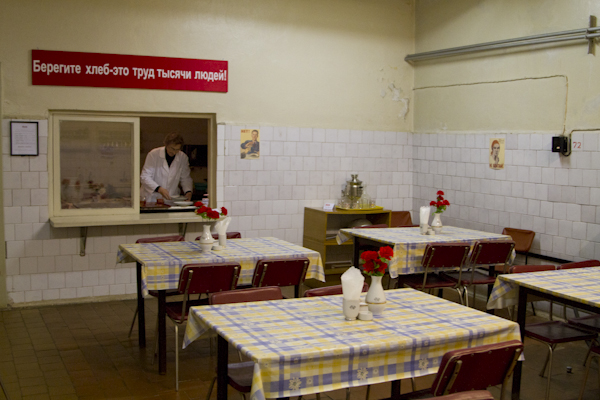
Oskar was an outstanding guide, constantly putting us on the spot, playing up the Communist spiel and matching wits with our comebacks, while giving an informative and sensitive account of what life was like in Latvia during the Soviet occupation. His tour was the highlight of my entire 3 week Baltic trip.
But despite wandering around down there for nearly 2 hours, we only saw a fraction of the facility.
Several distant, secret corners of this place will just have to remain a Cold War secret.
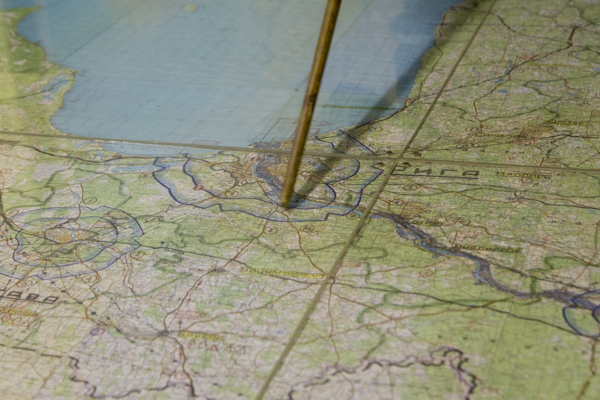
Photos ©Tomoko Goto 2015

Get your FREE Guide to Creating Unique Travel Experiences today! And get out there and live your dreams...
